FRENCH LETTER
In praise of a nose in Périgord
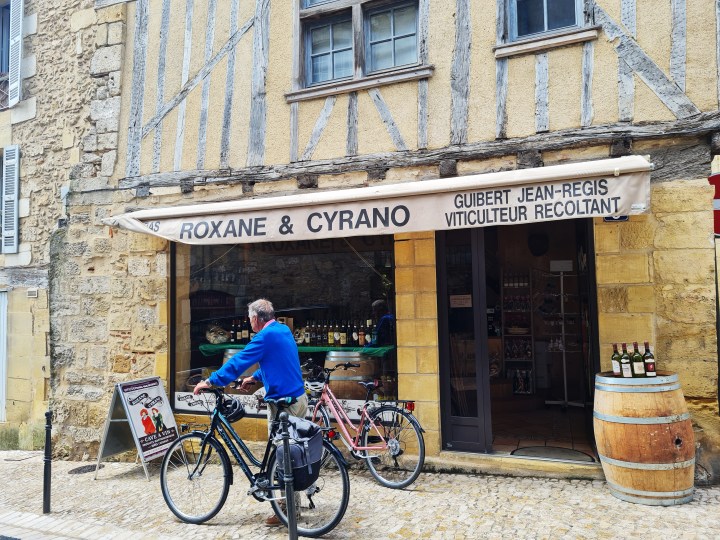
It is almost impossible to explore the town of Bergerac and the surrounding Périgord region without becoming obsessed with noses. Because of all the references to Cyrano’s illustrious rock of a nose, and you keep smelling irresistible food and wine.
It’s a rock! It’s a peak! It’s a Cape! No, not a Cape, it’s a Peninsula! Most French readers would immediately recognise these words praising an extraordinary nose from Edmond Rostand’s play Cyrano de Bergerac. The real Savinien de Cyrano de Bergerac (1619 – 1655) was known for his big nose and his panache (a word which was assimilated into the English language thanks to Rostand’s play), his prowess with a sword and his way with words.
But he was also a bon vivant in the true sense of the phrase. A sociable person who has cultivated and refined tastes especially with respect to food and drink, according to Merriam-Webster. And that famous nose of his must have helped him to cultivate and refine his culinary tastes. A well-developed sense of smell is an essential part of enjoying food, after all, and a wine connoisseur needs a good nose as much as a good liver.
Périgord, in the luscious green Dordogne department of France, has always been a food lover’s paradise, with products like foie gras and confit de canard and other duck meat specialities. Not to forget the delicious stew called cassoulet, which actually originated a little further south in the Languedoc region, but is still offered by restaurants all over the south west of the country. Even today, with many foreigners expressing moral qualms about eating foie gras, and vegetarians shunning duck meat, it remains a place where even vegans can find their thrill.
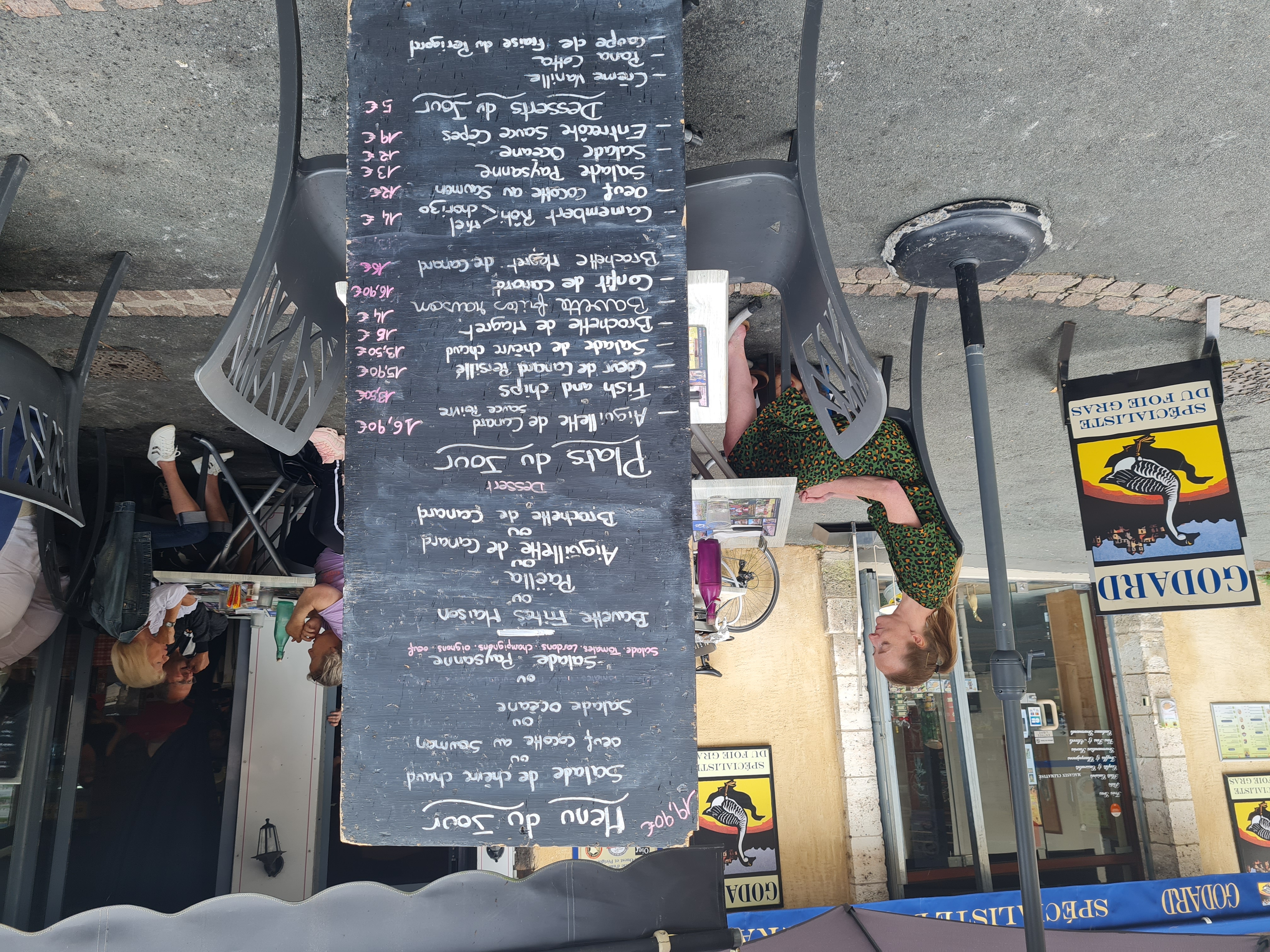
More canard dishes on the menu in Bergerac. (Photo: Marita van der Vyver)
The Périgord truffle is world-famous, with reason, and there are walnuts in abundance, from which the loveliest walnut oils are made, and at the right time of the year you find wild mushrooms like the little orange girolles everywhere. In summer you can buy the bright red strawberries of Dordogne at most markets, especially around the village of Vergt, and huge heirloom tomatoes in shades of red, yellow and green. And of course there are the Bergerac wines: lusty reds, pale pinks, and the white wines which can be sweet and mellow (moelleux) or sharp and dry.
So following Cyrano’s traces through the town of Bergerac and discovering the rest of Périgord inevitably becomes a flavour-filled adventure in which your nose and your tongue play major roles.
Although I’ve lived in France for more than 25 years, my knowledge of Périgord was limited to hearsay until the past month. After spending a couple of weeks in a borrowed stone cottage in Périgord Vert I have fallen under the spell of the place. And food, glorious food, has a lot to do with this enchantment. As it always does, I suppose.
I now know that historically Périgord comes in four colours. The northern Green Périgord where our stone cottage is situated, is named for its meadows, and the western Black Périgord for its dark forests and truffles. White Périgord in the centre got its name from its chalky soil and pale cliffs, and the eastern Purple Périgord from its vineyards and wine. And the fact that half of these historic names refer to truffles and wine already hints at a rich culinary tradition.
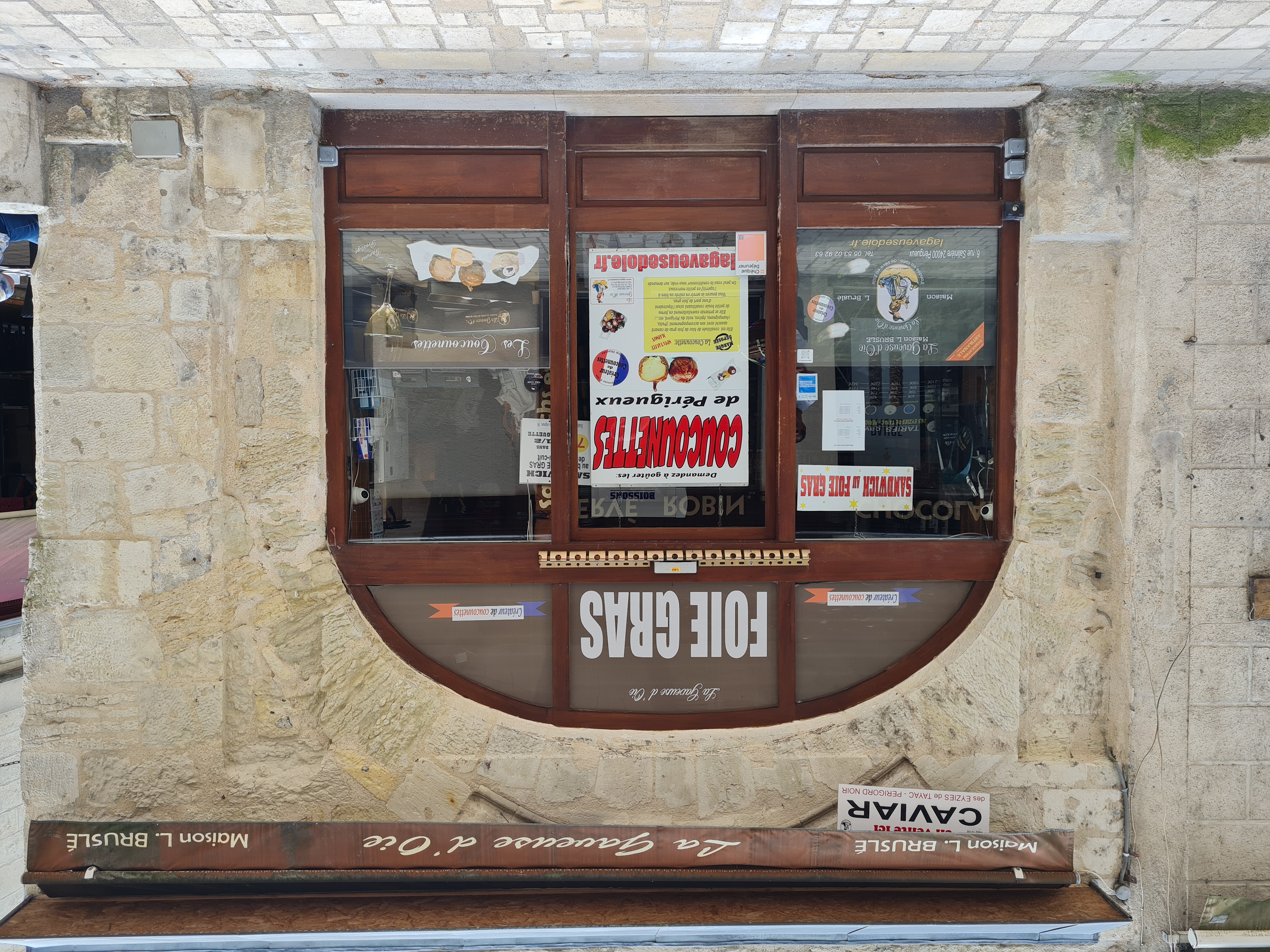
Coucounettes in Périgeux. (Photo: Marita van der Vyver)
We started our exploration in the historic centre of Périgeux, the administrative capital on the Isle River, not planning to have lunch there, but life is what happens while you’re making other plans, isn’t it? We chanced upon a shop selling coucounettes, a small round version of foie gras we hadn’t tasted yet, and because I was charmed by the word coucounette and my French beloved’s love of foie gras always outweighs any qualms I might have about the force-feeding of birds, we wanted to try it. To our chagrin the shop was closed because it was Monday (like many shops and restaurants in the French countryside), but the description of the coucounettes in the display window was so tempting that we were suddenly ravenously hungry.
Next thing we knew we were sitting down at a restaurant and ordering a Périgourdine salad for me and an assiette paysanne for my partner, both dishes containing bits of foie gras and other duck delicacies. Thin slices of smoked magret (duck breast) in my salad, and a duck terrine with pistachios in the Frenchman’s rather luxurious “peasant plate”. If this was peasant food, we would gladly become peasants.
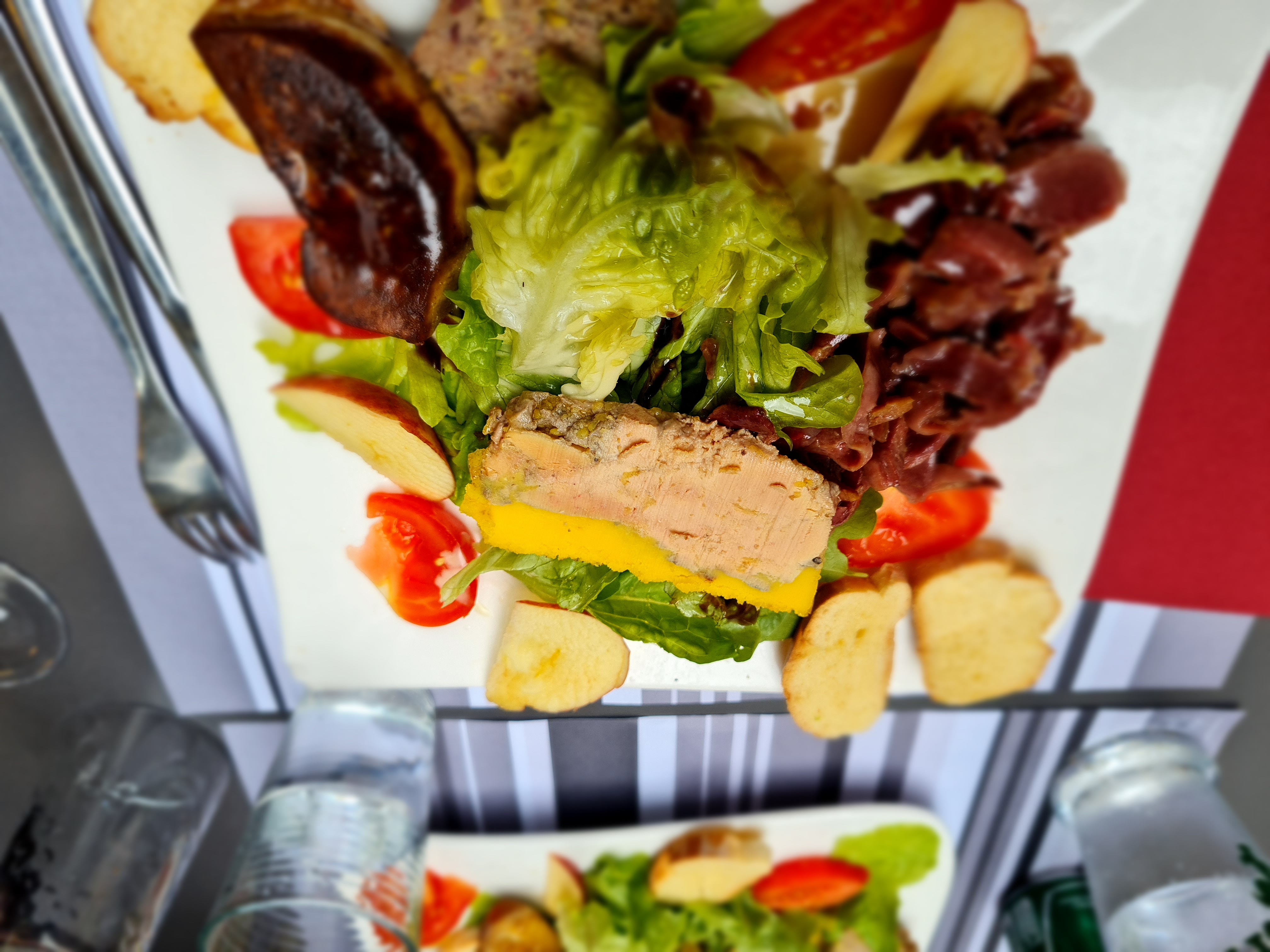
A ‘peasant plate’ in Périgeux. (Photo: Marita van der Vyver)
I swallowed down my salad with a glass of dry white Bergerac – and this impromptu meal set the tone for the rest of our Périgord peregrinations. They always revolve around food, not necessarily in restaurants because we are still travelling on a limited budget, but we buy local products at markets and have picnics on the shores of the many rivers in this regions, or in the gardens and parks of an astounding number of castles, most of them open to the public.
We had a picnic with a breathtaking view in the park behind the Château de Hautefort, with local sheep’s milk cheeses and duck meat patés and strawberries, and another one next to the Dordogne River on a scorching hot day, with apricots and walnuts and cold leftovers from a roasted farm chicken.
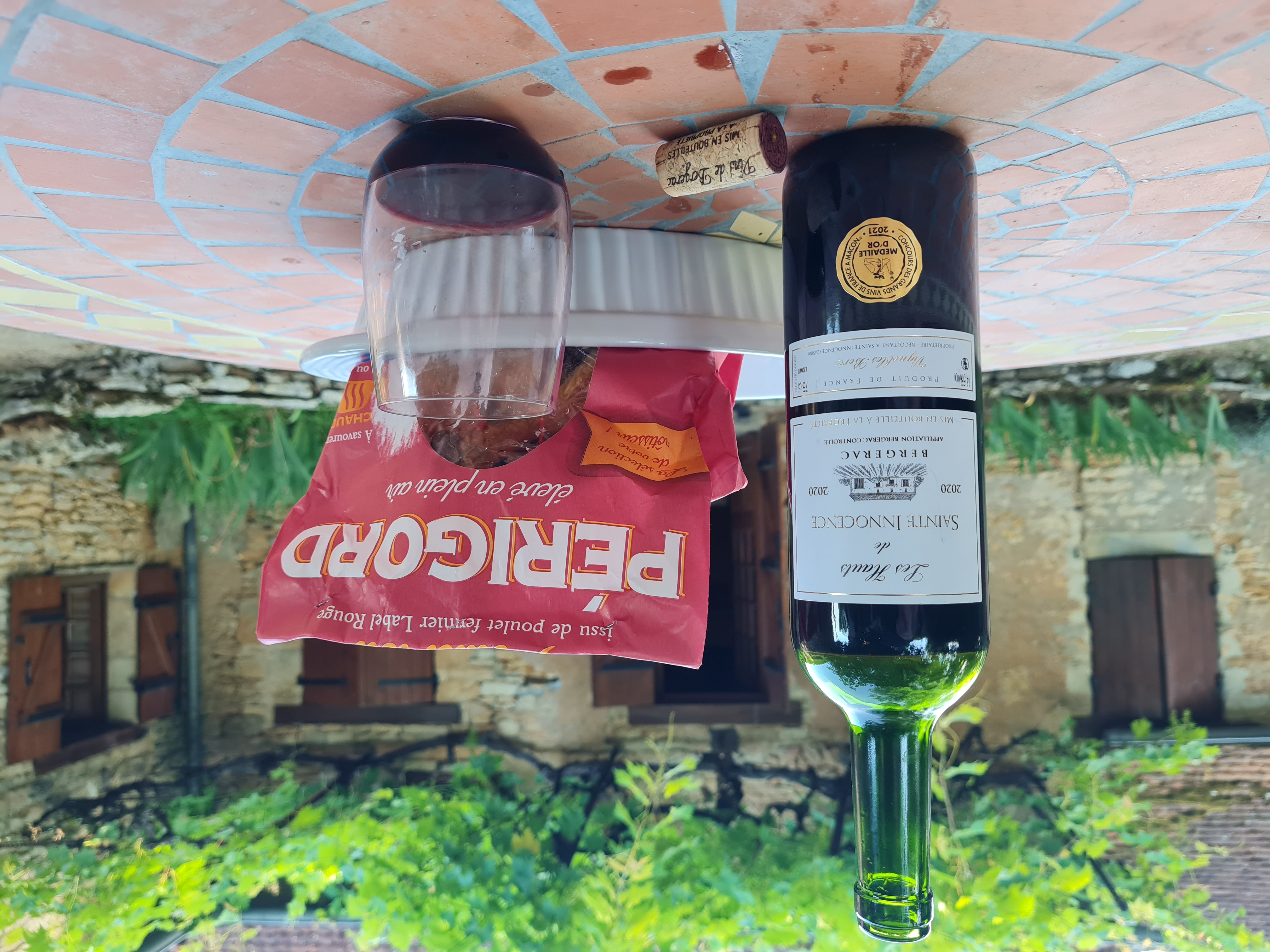
Périgord farm chicken and Bergerac wine for a simple meal outside our stone cottage. (Photo: Marita van der Vyver)
At the Wednesday market in the medieval town of Sarlat we bought a brown-paper bag full of girolle mushrooms and made a risotto in the kitchen of the little stone cottage. We have no oven here, only an old two-plate stove, but after spending a month in an ovenless cottage on the island of Lesbos last year we’re actually coping quite well. Besides, an ovenless kitchen is an excellent excuse for going to a restaurant every now and then.
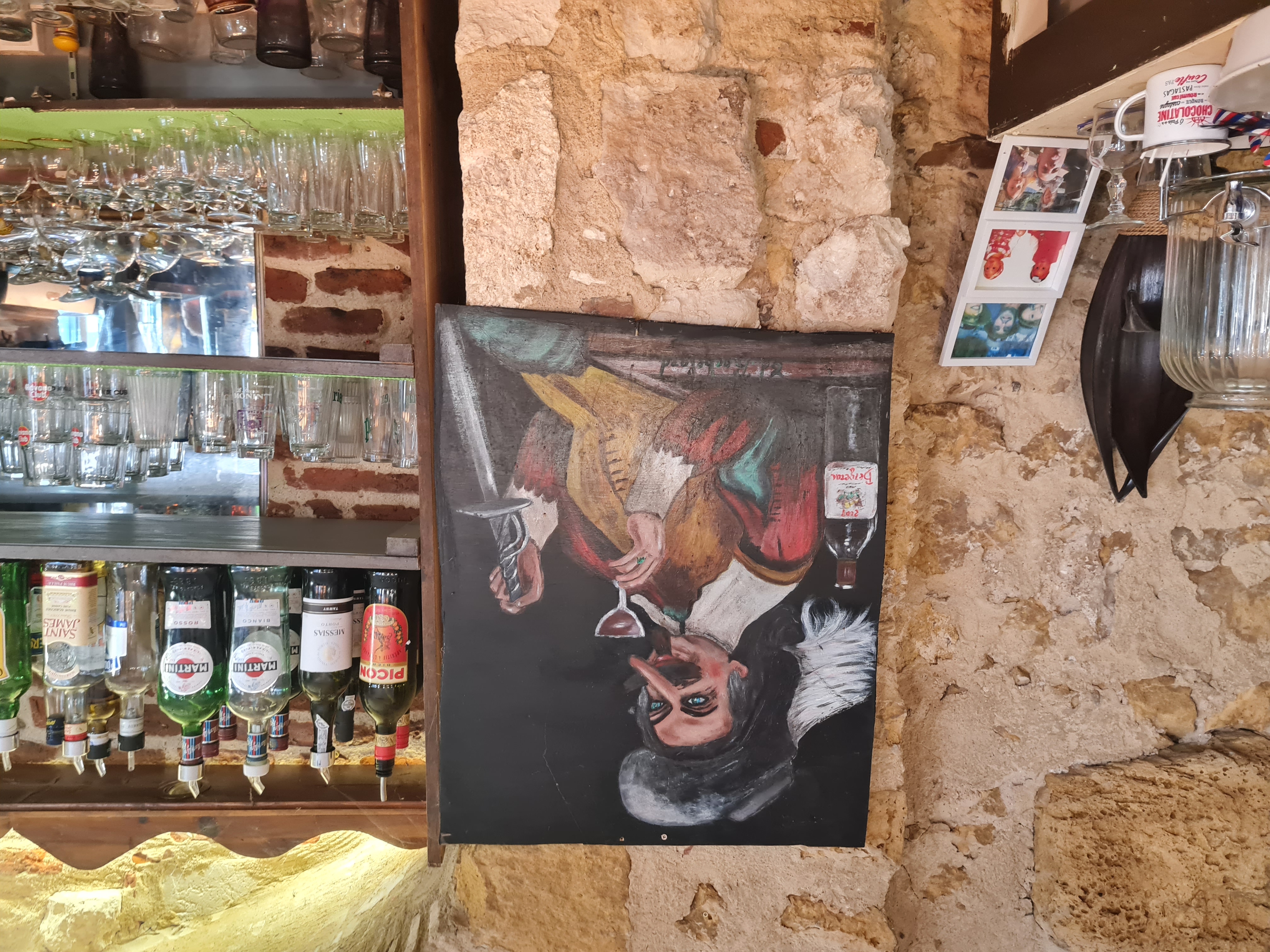
Cyrano looking down his nose from behind the counter. (Photo: Marita van der Vyver)
Another handy excuse was a sudden summer thunderstorm with pouring rain that literally drove us into a cosy bistro in Bergerac, where Cyrano looked down his nose at us from a painting behind the counter while we enjoyed the duck delicacies on our plates: slivers of meat called aiguillettes for the Frenchman and crispy duck hearts for me. Yes, duck hearts, which I find much more delectable than the more famous fatty duck livers.
I have to confess that I’m partial to just about anything edible that comes from a duck. It might be the only meat that would prevent me from ever becoming vegetarian. I can live without our South African droëwors, if I have to, and without the occasional juicy and almost raw steak, and even without a bite of the tenderest Karoo lamb once or twice a year. If I really have to. But I don’t know if life without magret de canard would be worth living.
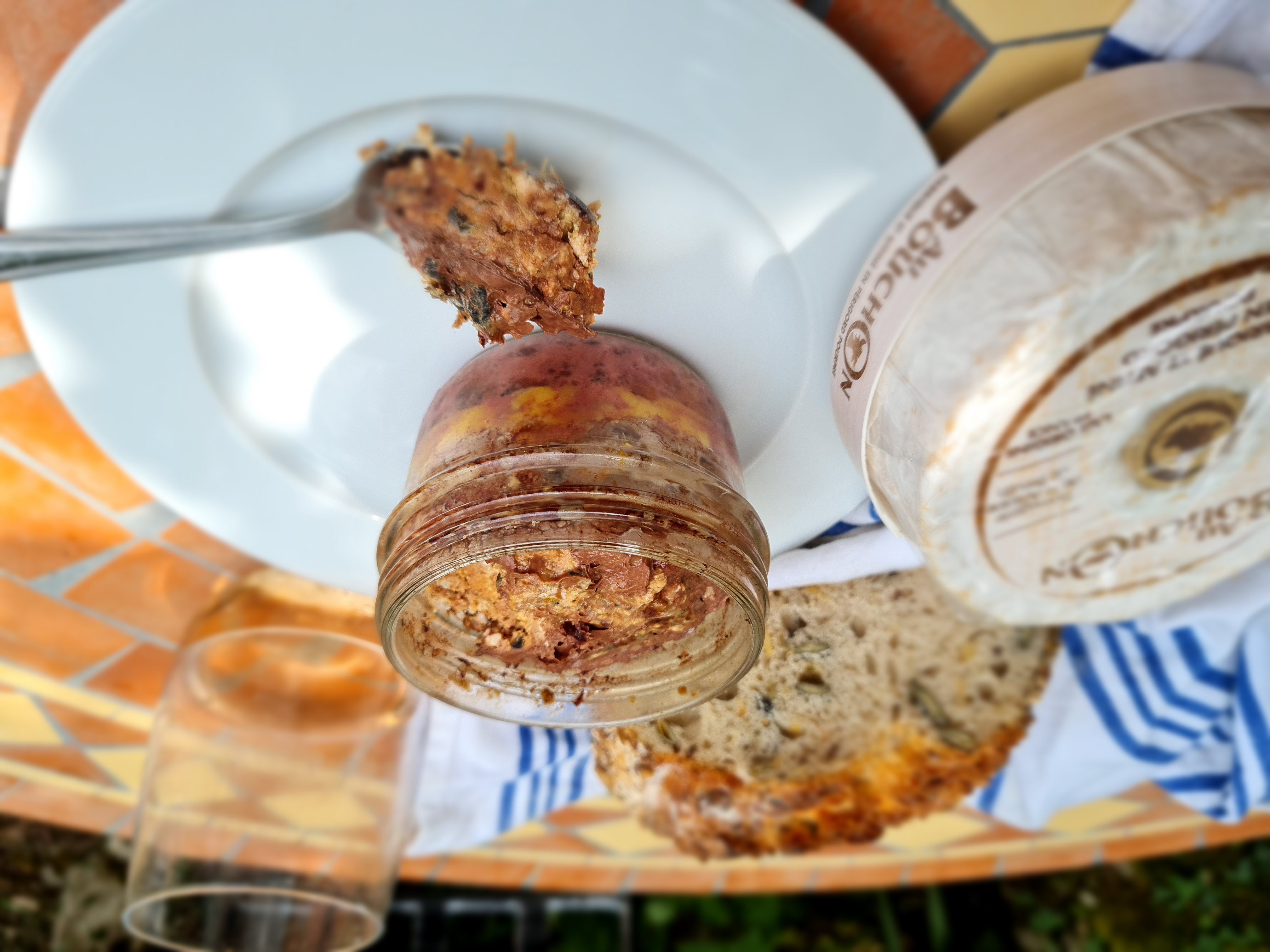
Our neighbour’s delicious duck paté. (Photo: Marita van der Vyver)
So the profusion of duck meat products in Périgord really pleases me. I was especially delighted when one of our neighbours (who bears an uncanny resemblance to the French singer Renaud in younger days) brought a jar of his own home-made duck meat paté to the little stone cottage. Not only because I used to like Renaud and I still love duck, but even more because this is not a typically French gesture. The French don’t do the American thing of welcoming new neighbours with something to eat or drink, at least not in the parts of the country where I’ve lived before.
I used to do it myself many years ago, carry some cookies or preserved fruit to new neighbours, but I got weird looks and was never invited inside. Maybe I was just unlucky with neighbours, but I decided to become more French and stopped doing that.
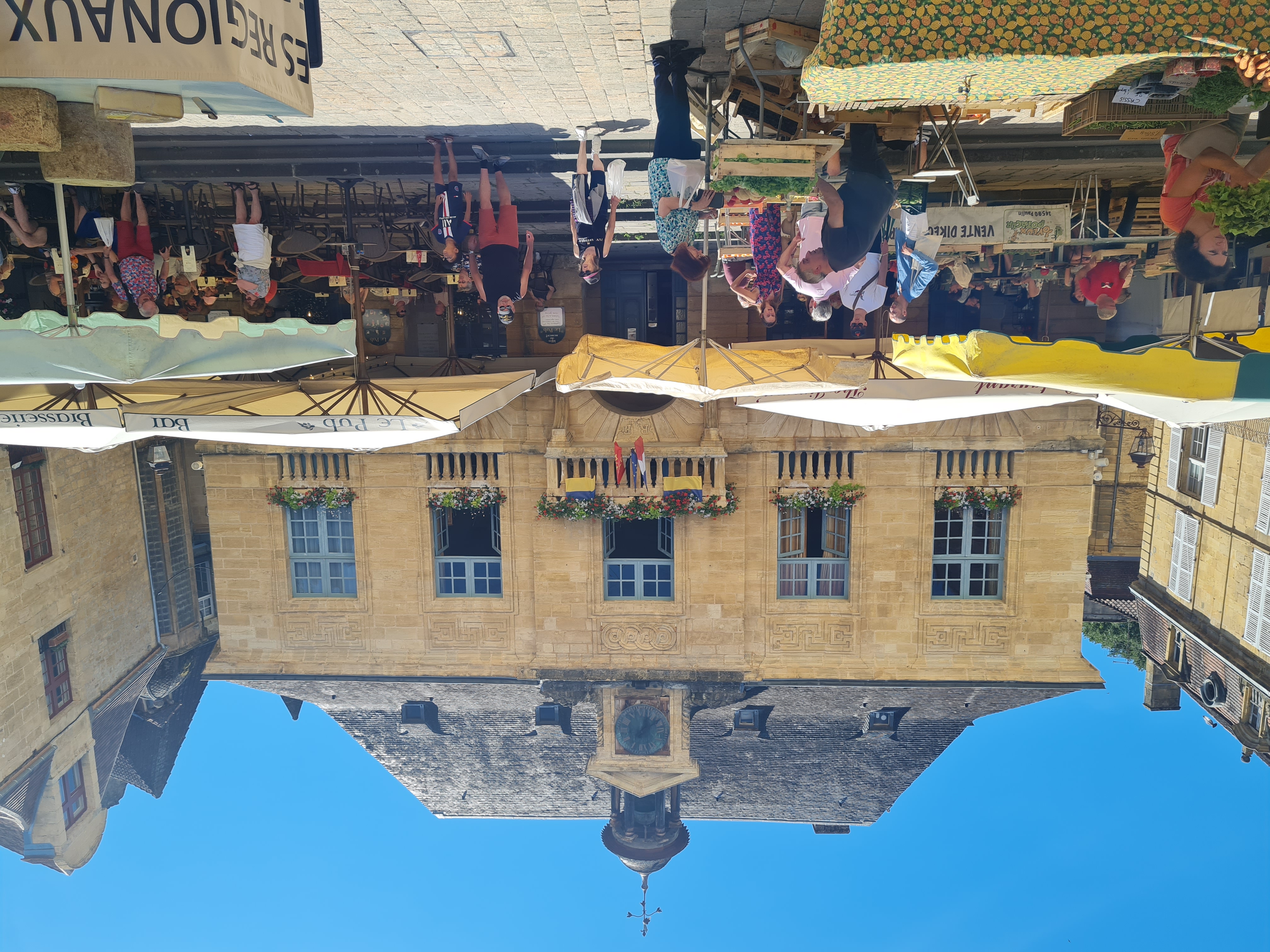
Sarlat’s Wednesday market. (Photo: Marita van der Vyver)
What joy, therefore, to be presented with an edible gift by a friendly neighbour. The paté tasted great and my faith in kindness was stoked again. I’m beginning to think I might even be able to settle down in this region after our globe-trotting adventures of the past year.
You don’t have to love duck meat to live here, but it would obviously help. And you need to accept that you wouldn’t be able to get away from foie gras. A week ago I joked that the only foie gras product I’d still like to taste was foie gras ice cream. I was thinking of the tantalising truffle ice cream I’d discovered in Vaucluse in France, and the unforgettable garlic ice cream made by Barbara Weitz of Stirlings in Nieu-Bethesda, of all places. But I couldn’t, for one moment, imagine ice cream with foie gras.
Until I tasted it.
In the town of Brantôme – dubbed the Venice of Périgord because its historic centre is a beautiful little island with ancient buildings surrounded by the Dronne River – we found another excuse to eat out. It was our daughter’s last night with us after visiting for a few days and it was the first night of the jousting season on the river. Indeed the first night in three years – the traditional jousting competitions held every Friday night in summer had been suspended by Covid, like just about everything else – and the whole town was in a festive mood.
We dined at a restaurant right on the river – and I mean on the river. As we sat down, our daughter accidentally bumped her fork off the table, and it fell into the river. We leaned over the railing to peer into the clear water and were astonished to see quite a selection of cutlery, and even a lonely piece of crockery, on the bottom of the river. The waiter simply shrugged and warned us to keep our cellphones on the far side of the table.
My beloved ordered a brochette of duck meat, delicate pieces on a skewer, or a yummy sosatie as we would call it in South Africa. I surprised myself by not going for duck and chose the luxurious ravioli made with boletus mushrooms and fragrant summer truffles. Our daughter had a boring plate of frites, but that is her particular pêché mignon or “cute little sin”, so we didn’t even try to convince her to attempt something more daring. I have to add that even the French fries look and taste different here, bigger and plumper and browner than elsewhere in the country, with a slight suggestion of nuttiness inside. More potato, less fry.
Still, the edible highlight of the evening – if not of my entire stay in Périgord – was the foie gras ice cream discovered in an ice-cream shop on the banks of the river. There was a wide variety of flavours on the handwritten blackboard outside the shop – my old favourite, salted caramel, as well as honey-and-lavender, violet, basil, rosemary, ginger – but I couldn’t believe my eyes when I read foie gras. I had to enquire at the counter if this wasn’t a practical joke played on gullible foreigners, and was told, non, madame, they sold small balls of this very special ice cream flavour for dégustation.
Of course I had to try it. As a sometimes jaded old foodie, I live to be surprised by unexpected combinations on my palate, and my oh my, did this combination surprise me. Imagine the creamiest homemade ice cream you’ve ever tasted, with just a hint of the smoothest foie gras you can ever dream of tasting, and you’re almost there. But not quite. Some things simply can’t be described.
I can’t claim that foie gras ice cream was on my bucket list – you can’t put something on your bucket list if you’re not aware of its existence – but now that I’ve experienced it I would certainly recommend that you add it to your bucket list if you’re an adventurous foodie. Cyrano de Bergerac would have loved it – and he would’ve found a torrent of words to describe it.
I can’t think of any higher praise in this part of the world. DM/TGIFood
Follow Marita van der Vyver on Instagram Faking French.
The author supports Ladles of Love, an NGO feeding the hungry and providing healthy food in Cape Town. You can support them here Ladles of Love.






 Become an Insider
Become an Insider
Comments - Please login in order to comment.